

MIDWEST
April 2005

2 of 6


MIDWEST
April 2005


2 of 6
From Southern Illinois it’s on to Central Missouri where my newest herping buddy, Wayne Brekhus, introduces
me to Midwestern glades
―
hillside prairies surrounded by woods, with scattered rocks providing cover for all sorts
of herps.
Cutting across an open field I startle something that whips away through waist-high grass. Following the
movement I catch a glimpse of something pale and slender as it disappears beneath a fallen tree. Wayne comes over
and we roll the log to find our first snake of the day.
Spreading out, we search for stones to flip, and I am introduced to the quintessence of midwestern herping: Turn
a rock, find a Ringneck. Turn a rock, find a Ringneck. Turn a rock . . .
At first it’s kind of fascinating, the frequency with which they appear under virtually every bit of cover. Then
you realize they’re unavoidable, and the surprise is when you don’t find them. Eventually, when dozens become
hundreds (the Kansas experience), you become numb, falling into a pattern of lift, look
―
sweep away the snakes
―
lower the rock, repeat.
Under one rock we find an exception, a different species that has the place all to itself. I lie down on the ground
and position my camera to take a picture. As I’m looking through the viewfinder, a Ringneck races in from the right,
crawls over the Earth Snake, poops right beside him, then exits to the left. As I said, they’re unavoidable.
Take a break from flipping stones to check out a small pond. Nearly step on this Ribbon Snake, its belly bulging
from a recent meal.
In addition to snakes, other herps are found hiding beneath the rocks, including lizards like this Racerunner.
This one gives us fits, by far the most difficult snake of the trip. It just won’t stay still for a photo, constantly
squirming and trying to bury itself in the soil. After forever it finally pauses and allows me to take its portrait, which I
barely manage to squeeze off in the midst of a thunderstorm.
At one point we’re far apart when I hear Wayne calling, “Eitan!!” I go running in his direction (with a bit of
flying, too, as I trip on some buried barbed wire) and see him crouching over a rock, holding on to something I can’t
see. He’s shouting with excitement, and as I get closer I understand why.
With Ringnecks so plentiful, you quickly form a search image of tiny black snakes beneath the rocks. So imagine
the shock when Wayne lifts this rock . . . and the tiny black snake morphs into a six-foot Coachwhip!
It’s a rare find on this glade, and certainly a highlight of Wayne’s herping career to date. He’s thrilled, and I’m
delighted to be there as a witness. Besides, better he should get musked than me.
We finish the day by some bluffs near a river, hoping to see Copperheads or Rat Snakes, but the only resident at
home is a Racer lounging on the porch. Wayne and I have a nice dinner, say our good-byes, and then I head west for
the Great Plains of Kansas.
Prairie Racerunner
Cnemidophorus sexlineatus viridus
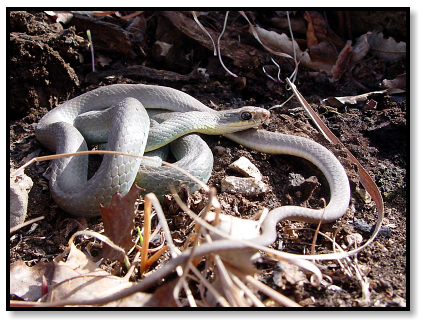
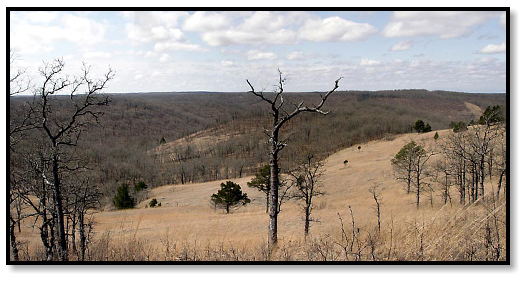

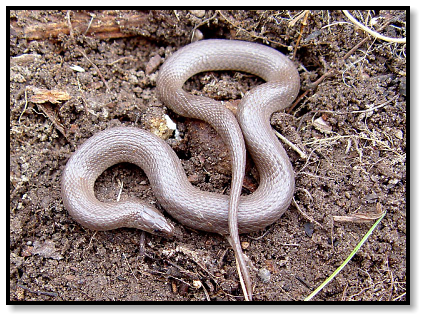
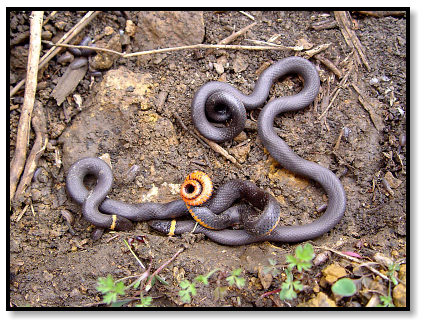
Yellow-Bellied Racer
Coluber constrictor flaviventris
Prairie Ringneck Snake
Diadophis punctatus arnyi

Western Ribbon Snake
Thamnophis proximus
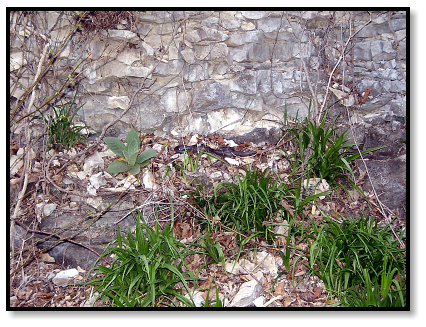
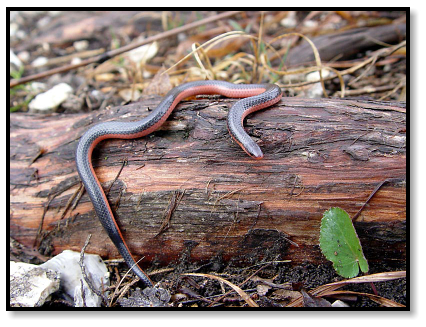
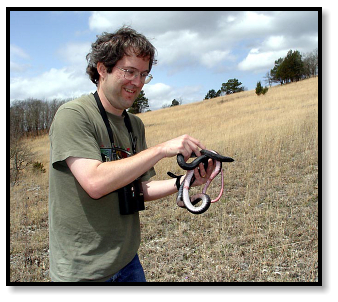
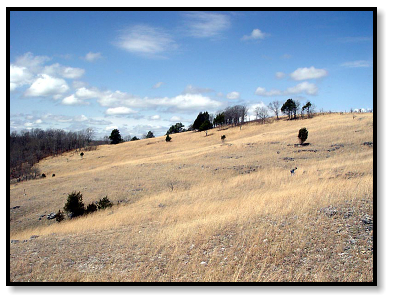
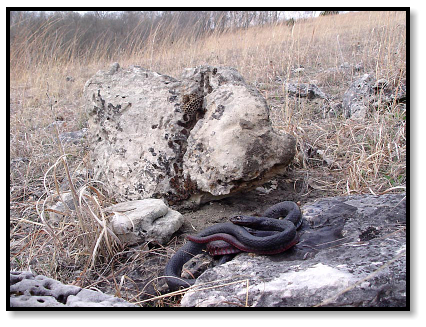

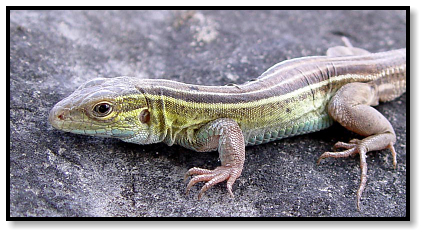
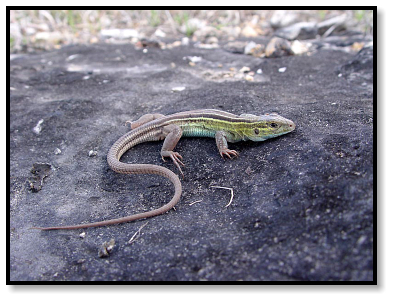
Western Worm Snake
Carphophis vermis
Eastern Coachwhip (black phase)
Masticophis flagellum







